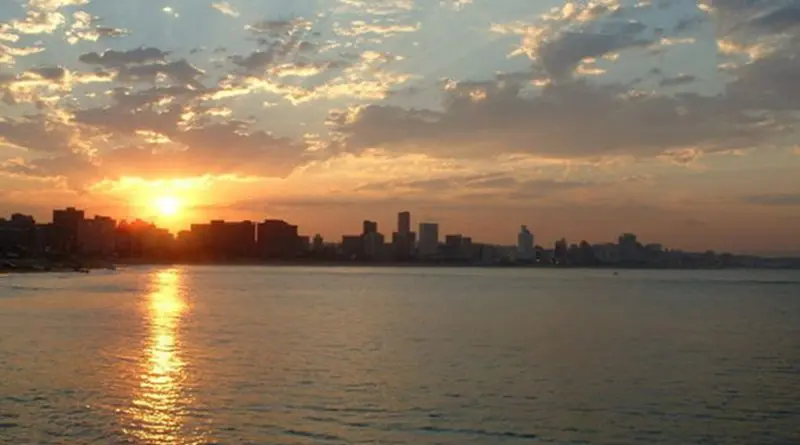Power Ships As ‘Short-Term Solution’ To Mitigating South Africa’s Energy Crisis? – Analysis
By SAIIA
By Busisipho Siyobi*
Southern African Development Community (SADC) member states have been called to produce strategic plans to transition their electricity supply industries towards cost-reflective tariffs by 2019. This was concluded at the 34th meeting of SADC Energy Ministers Conference, recently held in Johannesburg.
The meeting prioritised long-term solutions such as improving the sustainability of the sector, creating a basis for greater investment in new generation capacity by state utilities and Independent Power Producers (IPPs), as well as ensuring that the region achieves a renewable energy mix of 32% by 2020. Though the outcomes of the meeting presented compelling long-term strategies, short-to-medium term solutions for urgent electricity needs were not forthcoming.
Both South Africa and Ghana have considered the rental of power ships – a special purpose marine vehicle on which a power plant is installed as a short-term solution to solve the energy crisis.
The Ghanaian government requested two power ships from the Turkish energy producer company, Karadeniz Holdings’ Karpowership unit, which are due to arrive in August and will be operational by September 2015.
This potential solution was presented to Eskom, the Department of Energy (DoE) and the Department of Public Enterprises (DPE) by the same Turkish company. Earlier in 2015 Mr Aphane, the DoE’s deputy director-general for policy, planning and clean energy, expressed that the department was looking into short-term alternative solutions such as a power barge and power ships.
Karadeniz Holdings presented the power ships as an alternative to Eskom’s open cycle gas turbines (OCGTs), which currently use expensive diesel to generate electricity during peak demand. Eskom’s reserve supply margin has been depleting due to various factors, inadequate investment in new generation capacity since 1994 being the most important. Medupi and Kusile have incurred delays and cost overruns. Even when they are fully functional, the reserve supply margin will be narrow.
The two existing OCGT plants were built on the basis that the technology has been proven all over the world with numerous suppliers, along with the advantage of being built in 3 to 4 years. The OCGTs built in 2004 have a 1000MW generation capacity, and an estimated life span of 25 years. Despite OCGT reliability, power ships are increasingly viewed as a more efficient alternative for mitigating South Africa’s current energy crisis. Instead of diesel, for instance, the power ships utilise heavy oil fuel to generate electricity, and Karpowership is planning to use natural gas in the long run. Karpowership also operates and maintains its own power ships with 2 to 5 year rental contracts. The technology allows a station to operate for 12 hours a day in a 12 day cycle and when out of power it draws energy from a storage ship moored next to it, a ‘floating battery’.
Moreover, in 2006, the Western Cape used a power ship during routine maintenance at Koeberg when the utility rented a barge-mounted turbine to supply power. Thus, Eskom is aware of the potential of power ships, though Mr Etzinger, Eskom’s Head of Integrated Demand Management (IDM), said that Eskom was not convinced by the power ship proposal as a short-term solution for the country. This is because the power ship only has a generation capacity of 310MW, and this is too small to feed into the national grid.
On the contrary, Mr Day, power expert and managing director of the South African National Energy Association (Sanea), argues that power ships are a suitable solution for South Africa’s current power crisis because generation capacity of 310MW is equal to one unit of a two-unit 600MW power station, and power ships can deliver at R2.00 to R2.50/kWh, substantially less than Eskom’s OCGTs that cost R3.00 to R4.50/kWh. Karadeniz Holdings indicated that the power ships can be ready within 60-180 days and will need an on-shore substation to feed the power into.
However, the estimated costs of the power ships are still significantly more expensive than IPP’s and thus the South African government could look into opening up the market to IPPs as a short-term solution that may have long-term benefits. For instance, the levellised costs of solar photovoltaic power in 2030 (in today’s prices) are projected to range from R0.54/kWh to R0.78kWh, and wind is estimated at R0.60/kWh in todays’ prices.
If the South African government is to consider this proposal fully, there are important questions that it needs to address cautiously, keeping in mind the long-term solutions proposed in the SADC Energy Ministers Meeting. What environmental impact may the procurement of power ships have in the construction of the on-shore infrastructure? Given that the company proposed to operate and maintain its own power ships, are the presented costs inclusive of the rental, operational and maintenance of the power ships? Indeed this deal may form part of the IPPs, but the costs seem uncompetitive when compared with solar or wind alternatives.
Therefore, power ships as a short-term solution to the energy crisis need to be interrogated further, especially when weighed alongside the option of opening the market to other potential IPPs.
*Busisipho Siyobi is a Konrad-Adenauer-Stiftung Scholar at SAIIA. A version of this article was first published in Business Day.
Source: SAIIA

